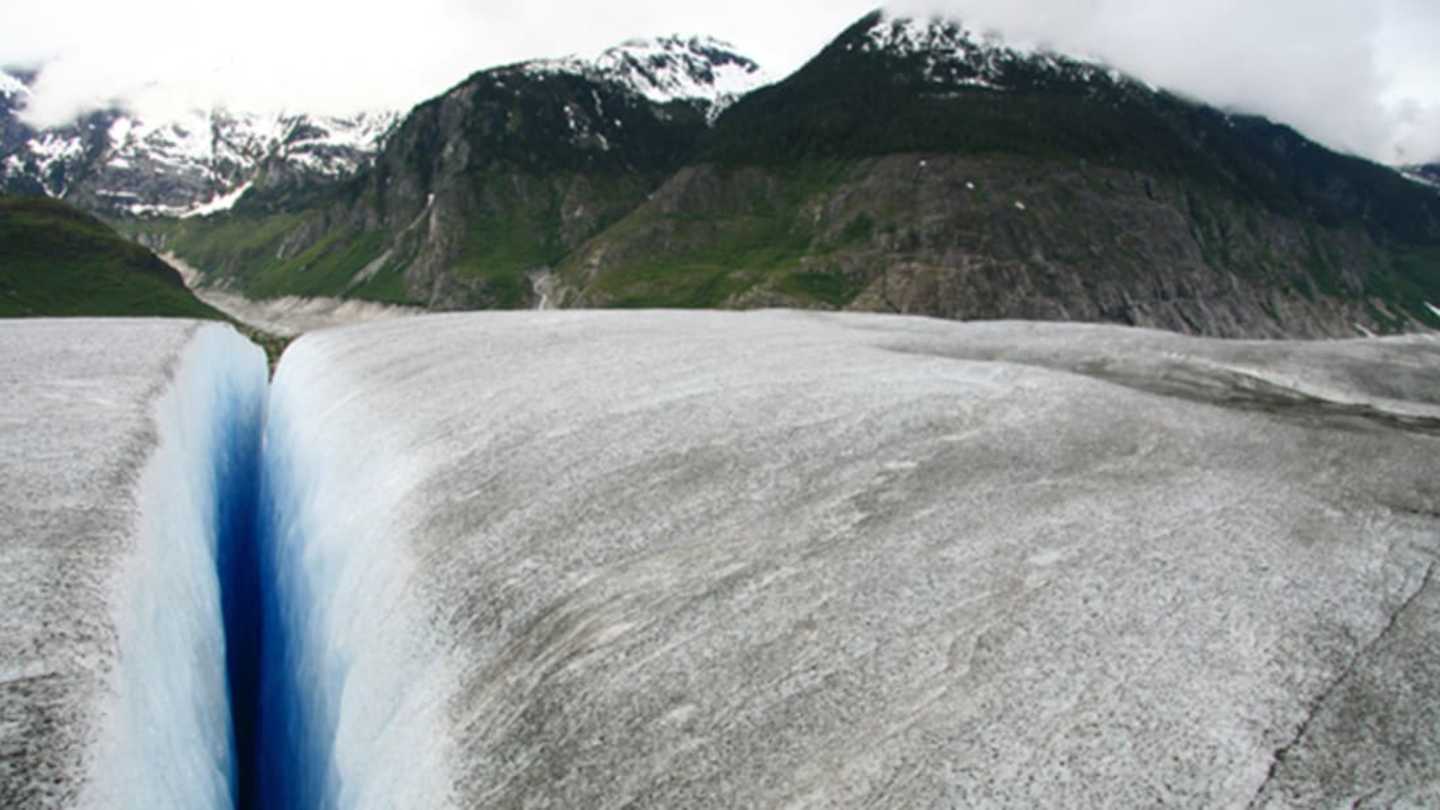Though both stemming from the Anglo-french word “crevace,” Meaning To Break, the terms “crevice” and “crevasse” describe distinct geological features with unique characteristics. Understanding their differences is crucial for anyone venturing into mountainous terrain or Studying Glacial Formations.
A crevice is a general term referring to any crack or fissure in various materials, from the small crevices in your sidewalk to immense canyons carved by Tectonic Forces. These openings are primarily formed through fracturing, caused by pressure, weathering, or seismic activity. In contrast, a Mountain Crevice within a glacier presents a much more specific and potentially dangerous scenario.
These deep fractures form due to the differing movement speeds of various sections within a glacier or ice sheet. Imagine trying to walk on a Constantly Shifting Surface – that’s essentially what happens with glaciers as they flow over uneven terrain or navigate sharp turns. This differential movement causes stress points, leading to the formation of crevasses.
Defining Crevice and Crevasse
Let’s dive deeper into the specific definitions of these terms. A crevice, As We Discussed Earlier, is a broad term encompassing any crack or fissure in solid material. Think of it as a general category for openings formed by fracturing. It could be a tiny split in a rock face, a gaping chasm carved by erosion, or even a narrow opening within a building’s foundation.
Now, when we talk about a crevasse, we’re specifically referring to a fracture within a glacier or ice sheet. These are like cracks on an Enormous Scale, often extending deep down into the Icy Mass. They form due to the unique dynamics of glacial movement, As Explained Before. The sheer size and depth of these fractures make them incredibly dangerous for anyone venturing onto a glacier without proper equipment and training.
 Parking Spot Number Riddle: Flip to Find the Answer
Parking Spot Number Riddle: Flip to Find the AnswerEssentially, while both involve breaks in material, “crevice” is a more general term while “crevasse” is specific to glaciers.
Glacial Formation Of Crevasses
The formation of crevasses is a fascinating interplay of ice, gravity, and the landscape itself. Picture a glacier as a massive river of ice, constantly flowing downhill under its own weight. As it moves across varied terrain – Think Hills, valleys, or even obstacles like rocks – different sections of the glacier encounter varying levels of resistance.
This uneven flow creates stress points within the icy mass, much like stretching a rubber band to its limit can eventually cause It To Snap. At these weak points, the immense pressure from the moving ice overcomes the strength of the Ice Itself, resulting in a fracture known as a crevasse. The deeper and wider these fractures become, the more dangerous they are for mountaineers traversing the icy landscape. Sometimes, multiple crevices Can Join Together, forming larger channels or even towering Structures Called Seracs – free-floating columns of ice that are Notoriously Unstable.
The shape and pattern of crevasses in a glacier often reflect the Underlying Topography. Steep slopes tend to have more numerous and deeper crevasses, while flatter areas may exhibit fewer fractures. Understanding these patterns can help mountaineers navigate glaciers safely and predict potential hazards.
Dangers Posed by Crevasses
Crevasses hidden beneath a layer of snow pose a significant threat to mountaineers and anyone venturing onto a glacier. These treacherous openings can be deceptively Difficult To Spot, making them all too easy to Stumble Into Unintentionally. A fall into a crevasse can Have Dire Consequences, as the sheer depth and icy walls make it nearly impossible to Climb Back Out Unaided.
Imagine falling down a deep, dark chasm with jagged ice edges – that’s the reality for someone accidentally stepping onto a crevasse. The impact from such a fall could result in serious injuries, Hypothermia Due To Prolonged Exposure, or even death. This is why experienced mountaineers always Use Specialized Equipment Like Ropes, harnesses, and crampons when navigating glaciers, ensuring they have support and safety measures in place should they encounter a crevasse.
Thankfully, advancements in avalanche rescue techniques and communication technology have improved the chances of survival for those who do fall into a crevasse. Swift action and proper training are crucial in these situations, emphasizing the importance of preparation and Vigilance When Exploring Glacial Terrains.
Rock Crevices: Habitats and Climbing Opportunities
While crevasses are a hazard in Glacial Environments, rock crevices often offer unique opportunities for exploration and even serve as habitats for various creatures. These fissures in the earth’s crust can range from small cracks To Massive Canyons, providing shelter and nesting sites for a variety of animals, Including Bats, birds, and insects. The diverse ecosystems found within these rocky formations highlight the importance of Preserving Natural Habitats.
For rock climbers, crevices present exciting challenges and routes To Conquer. These fissures offer opportunities for technical climbing, requiring specialized equipment and skills. Experienced climbers can navigate narrow passages, utilize handholds and footholds within the crevices, and rappel down sheer faces, pushing their limits and testing their endurance. It’s a thrilling way to explore the vertical world and connect with nature on a deeper level.
Whether providing shelter for wildlife or offering adrenaline-pumping challenges for adventurers, rock crevices demonstrate the multifaceted role they play in our natural world.
Understanding the Differences
Now that we’ve explored both crevasses and crevices in depth, let’s recap the key differences between These Two Fascinating Geological Formations. The most crucial distinction lies in their location and formation. Crevasses are found exclusively within glaciers or ice sheets, forming due to the differential movement and stress points within the icy mass. Conversely, crevices occur in solid rock, resulting from fracturing caused by tectonic activity, erosion, or even weathering over time.
Think of it this way: a crevasse is like a crack in a frozen lake, while a crevice is more akin to a fissure in a rocky Cliff Face. While both involve breaks in material, their origins and the environments they inhabit are fundamentally different.
Ultimately, understanding these distinctions is vital for anyone venturing into mountainous or glacial terrain. Recognizing the risks associated with crevasses and appreciating the diverse ecosystems found within rock crevices allows us to explore and interact with nature responsibly and safely.










